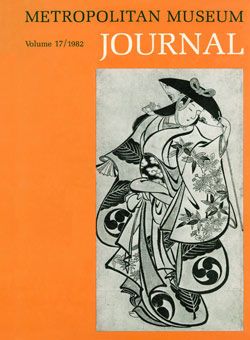Twilight Moon at Ryōgoku Bridge
Utagawa Hiroshige Japanese
Edo period (1615–1868)
Not on view
The Ryōgoku Bridge depicted here was one of the most important landmarks in the Edo townscapes. Spanning Edo's widest river, the Sumida, this bridge was one of the largest and most beautiful bridges in the capital. Hiroshige focuses on the dynamic forms of the strut system supporting the bridge, a symbol of modern Edo technological advances.
Also symptomatic of Edo modernity was the development of recreational boating for the middle class. While the passengers enjoyed the Sumida River from covered gondolas (yakatabune) such as those seen here, the bridge piers would cut the landscape into unexpected shapes.
Hiroshige depicts just such a scene here; the double-x form of the Ryōgoku bridge foundation is strikingly superimposed on a backdrop of a full moon and zigzagging clouds hovering over the watersurface.
Although Hiroshige's use of the pseudonym "Ichiyūsai" as his signature indicates a date fairly early in his career, the bold confident design typical of his mature style can already be detected in this scene from the series "Famous Sights of the Eastern Capital."
Due to rights restrictions, this image cannot be enlarged, viewed at full screen, or downloaded.


